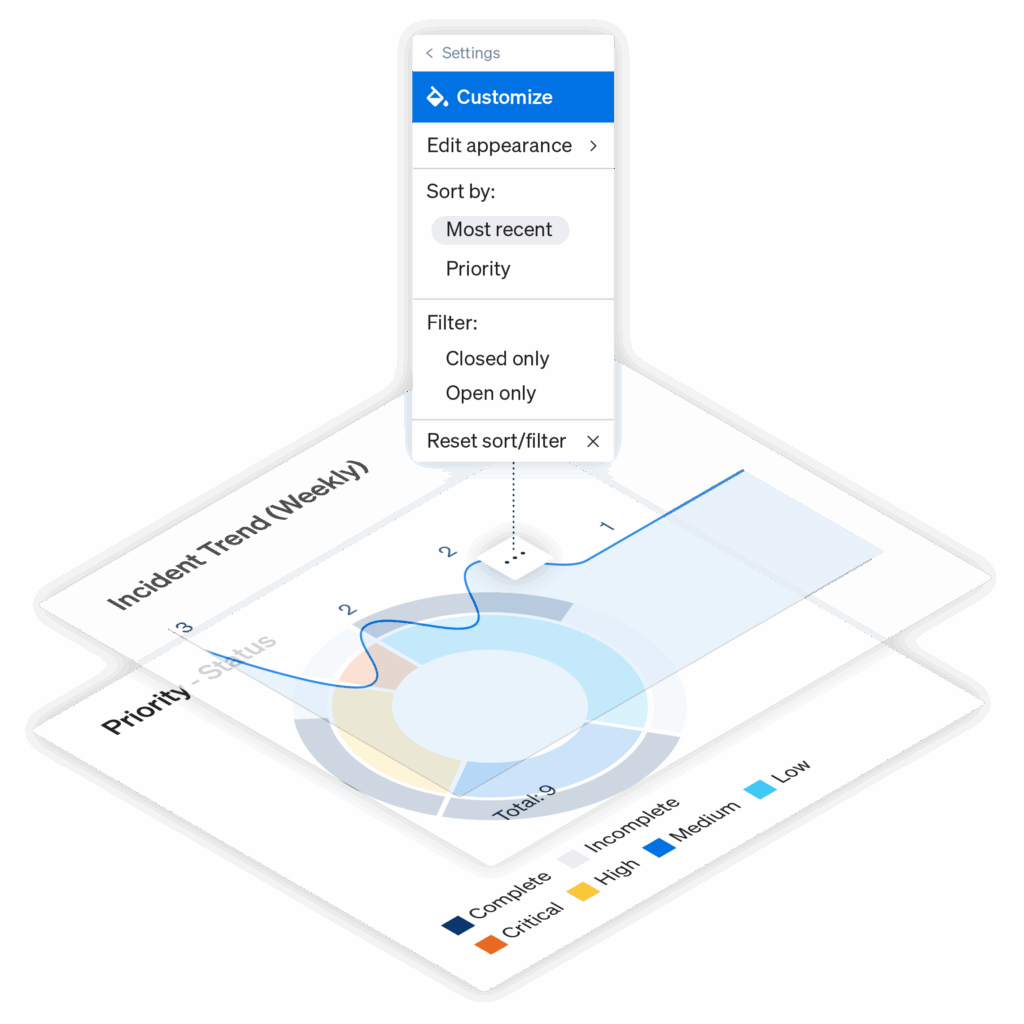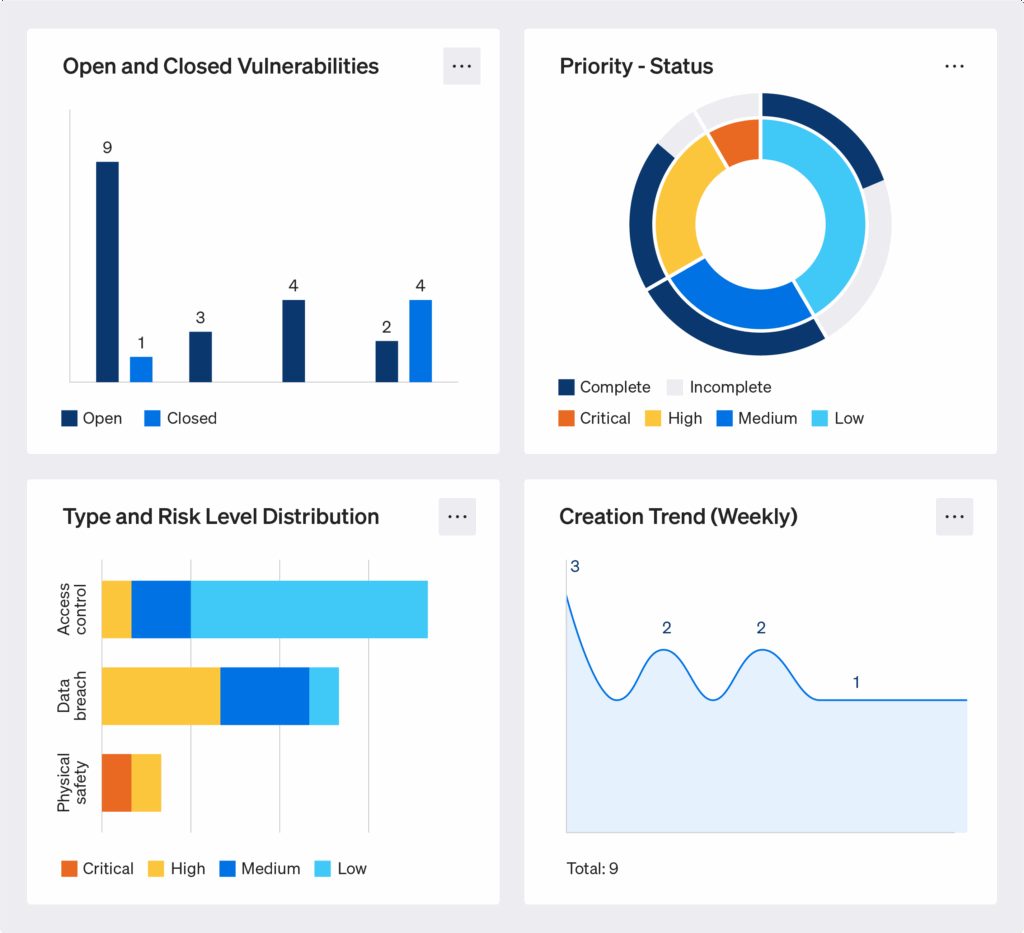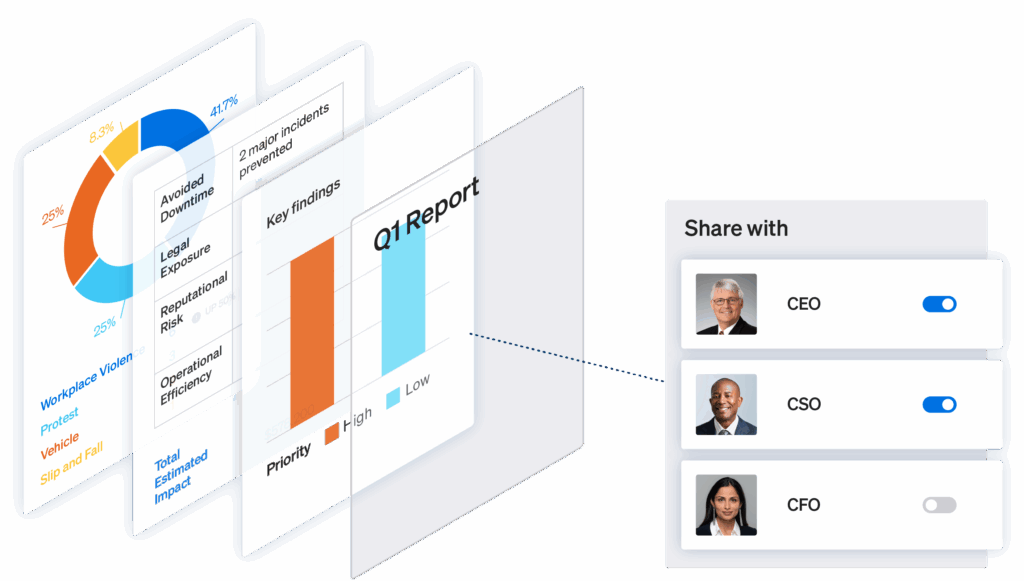5 Tips for Better Investigation Reports
How to build and deliver reports that showcase the business impact of your investigations program

Your investigations program is critical in keeping your organization safe, yet it’s often viewed as a cost center. That’s because for great security teams, success is invisible. And leadership and other stakeholders don’t always recognize the value of what they can’t easily measure or see. Without clear and actionable reporting, it becomes challenging to gain support and secure continued investment in your program.
You might be thinking, “I already report on my investigations program.” And that may be true, but presenting critical information in a way that clearly demonstrates impact and actually resonates with executives can still be a challenge. Two common mistakes often get in the way:
- Focusing only on what’s easy to measure: It’s tempting to report on outputs like the number of incidents investigated or cases closed to demonstrate how hard your team is working to keep your company safe. While these metrics reflect activity, they don’t tell leaders why your work matters.
- Overloading reports with jargon and detail: You live and breathe corporate investigations daily, but most of your audience doesn’t — they don’t need to know the intricacies of technical operations to understand the value of your work.
The result? All your executives see is busy work. And dense reports filled with technical language or overwhelming details can cause decision-makers to tune out instead of appreciating your work.
Overcoming these challenges and effectively resonating with key stakeholders requires clear, concise, and actionable insights showing how your work impacts the business. If the above mistakes sound familiar, consider these strategies to level up your investigations reporting:
Five actionable strategies to improve investigation reporting
1. Know what matters to the business
Your reports will only gain traction if they speak to what your stakeholders care about. Start by identifying value metrics that align with your company’s priorities. What’s on your executives’ radar right now? Whether it’s reducing financial risk, improving operational efficiency, or ensuring regulatory compliance, frame your reporting to reflect those goals.
For example, instead of saying, “We investigated 50 incidents last quarter,” try, “Our team’s actions mitigated $200,000 in potential losses from fraud.”
2. Create consistency with your brand
Your reports represent not just your team but the organization as a whole. By aligning your reporting with company branding (colors, fonts, logos, and other style guidelines), you help your stakeholders see your work as a key component of the business. A polished, consistent format adds credibility and ensures your reports feel professional every time.
Use platforms that allow you to customize colors and branding to make your reporting uniform and scalable. This positions your team as professional, systematic, and aligned with the organization.

Customize reports in Ontic to align with your company’s brand — from fonts and colors to logos and more.
3. Visualize your results
Executives often only have time to scan a report, so prioritize concise, visual highlights over walls of text. Use bar graphs and pie charts to present insights clearly and concisely, making it easy for executives to quickly scan and grasp the key message.
It’s also important to remember that different decision-makers value different details. A CFO might care about cost reduction, while a COO is likely more focused on operational efficiency. Tailor your reports to each audience. A platform that makes it easy to create a variety of charts showcasing different data points makes the process quick and efficient.

Ontic empowers you to create compelling charts and graphs that clearly convey key outcomes and
highlight the impact of your work.
4. Craft a compelling narrative
Every report tells a story. The most impactful narratives follow a simple yet powerful formula:
Security action taken → Outcome achieved → Business impact delivered.
For instance, let’s say an employee makes a vague but concerning threat, and your investigations team steps in quickly. They assess the risk, coordinate with HR and security, and de-escalate the situation before it turns into a crisis. Share how this avoided potential violence, costly downtime, legal risk, and serious damage to your company’s reputation. It’s even better if you can quantify those outcomes with real numbers. Adding context turns raw data into a compelling story that reflects your team’s value.
Enhance these narratives with tables that clearly link your actions to measurable business outcomes. For example, you could break down the cost savings mentioned above into a simple, easy-to-read table showing how you calculated impact across areas like avoided downtime, legal exposure, reputational risk, and more.
5. Secure your reports
Finally, keep in mind that your reports may contain sensitive information. In many cases, you may not want other managers or employees to access this data, as it can lead to internal misunderstandings, rumors, or even damage to the organization’s reputation if it becomes public.
To mitigate these risks, always customize file access and double-check permission settings. You might also consider setting expiration dates on reports to prevent outdated or irrelevant details from being shared. Whenever possible, use platforms that offer robust sharing controls, such as view-only access and safeguards against unauthorized downloads.

With Ontic, you can control report access, set view-only permissions, and add expiration
dates to enhance data privacy.
Moving forward
Your investigations program might be viewed as a cost center today, but with effective reporting, you have the chance to redefine its reputation. By aligning your metrics with business priorities, presenting insights clearly, and showcasing outcomes through a compelling story, you can prove the value your team adds every day.
Start bridging the gap between what your team does and what the business sees. When your stakeholders understand your impact, you’ll not only gain their support but also make a case for the growing resources your team deserves.








